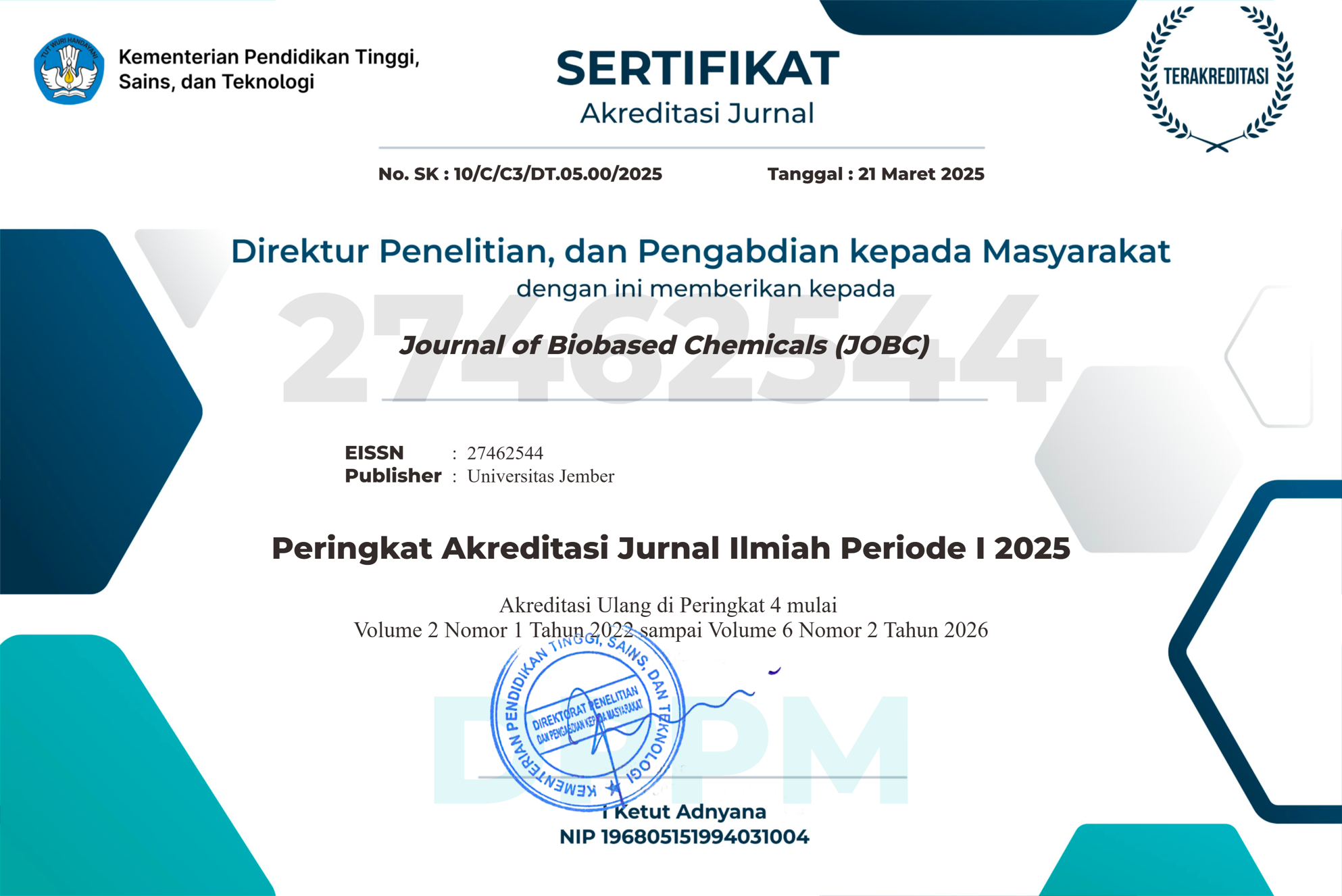Quantitative Structure-Activity Relationship Study of Ester-Based Ferulic Acid Derivatives Against Cervical Cancer Cell (HELA)
DOI:
https://doi.org/10.19184/jobc.v1i1.109Keywords:
QSAR Study, Ferulic Acid Derivatives, DescriptorsAbstract
Quantitative structure-activity relationship (QSAR) has been studied for ferulic acid derivatives to determine the QSAR model able to predict anticancer. As the subject of this research was a set of experimentally calculated IC50 value data of 6 ferulic acid derivatives against cervical cancer cells (HELA). QSAR analysis was based on multilinear regression calculation on fitting subset using log (1/IC50) as the dependent variable, and dipole moment, partition coefficient in the n-octanol/water, and atomic net charges of the aromatic carbons as independent variables. The values of the descriptors were obtained from semiempirical PM3 quantum mechanic calculation. The relationship between log (1/IC50) and the descriptors was described by the result in the QSAR model. The QSAR model for ferulic acid derivatives against HELA cell lineswas developed with the statistical parameters of R=0.998; R2=0.999; SE=0.00857; and F=394. The calculated log (1/IC50) using QSAR Hansch Model for ferulic acid derivatives have excellent agreement with experimental data of Log (1/IC50).
Downloads
Published
06/05/2020
Issue
Section
Articles







